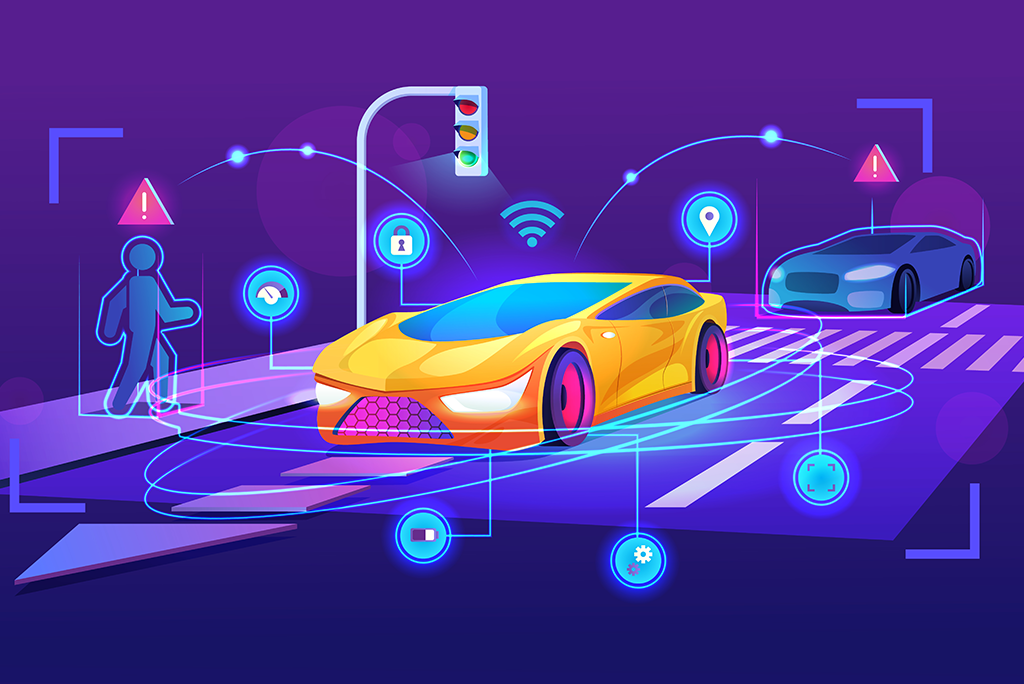
For the first time, autonomous vehicles (AVs) are now being tested on the streets of Austin, Texas and Miami, Florida, without drivers at the wheel. Designed by Argo AI, the vehicles are also being tested in Washington, D.C., Pittsburgh, Pennsylvania, Detroit, Michigan, and Palo Alto, California, as well as the German cities of Hamburg and Munich.
These tests are only the beginning. The company, whose autonomy platform uses lidar, sensors, and mapping software, is partnering with both ride-sharing service Lyft and Walmart’s delivery service to provide driverless taxi rides and autonomous grocery delivery.
Despite many advancements in AV technology, the road ahead remains uncertain. To replace human drivers, these vehicles need to be able to intuitively navigate roads and make split decisions the same way humans do. Current systems are still far from reaching this level of autonomy. However, some recent research breakthroughs may help engineers understand how to overcome this challenge.
Overly Conservative Decision Making Can Make AVs Easy to Fool
To make autonomous vehicles safer, engineers have traditionally designed them to be overly cautious. However, recent research from the University of California suggests this is part of the problem.
Since AVs cannot tell the difference between an object that makes its way onto a roadway by accident and an object placed on a roadside intentionally to provoke a physical denial-of-service attack, they can easily be tricked into making a wrong decision. For example, coming to a sudden stop in the middle of the road could potentially cause an accident.
Ironically, this problem is a result of engineers designing AV planning modules to operate with “an abundance of caution,” the study’s lead author, Ziwen Wan, a Ph.D. student in computer science at UC Irvine, explained to the UC newsroom.
“But our testing has found that the software can err on the side of being overly conservative,” Wan said, “and this can lead to a car becoming a traffic obstruction, or worse.”
New Machine Learning Technique Helps AVs Maintain Steady Flow at Intersections
Another obstacle for autonomous systems is knowing how to move together in busy intersections. A team of researchers from MIT recently discovered a machine learning technique that can help fleets of AVs navigate signalized intersections in a way that allows traffic to continue flowing uninterrupted, while at the same time making traveling faster and more fuel efficient.
Rather than relying on typical mathematical models to navigate complex intersections, the researchers turned to deep reinforcement learning, a model-free method that uses trial-and-error, in which the control algorithm learns to make a sequence of decisions, and is rewarded when it makes the right one. They refined this training further by using another technique known as reward shaping, in which they give the system some domain knowledge it would not be able to learn by itself. Using this method, the vehicle would be penalized if it stopped when it wasn’t supposed to brake. This helps the vehicle understand how to balance competing speed requirements that allow it to both improve travel time and reduce emissions.
Using simulations, the researchers found that if every vehicle on the road is autonomous, their control system could reduce fuel consumption by 18 percent and carbon dioxide emissions by 25 percent, while increasing travel speeds by 20 percent.
These research findings are just the start. With every advancement in AV technology, engineers are one step closer to creating a world in which traveling is easier, faster, and safer.
Preparing for Roadways of the Future
Learn about the latest developments in AV technology with training in foundational and practical applications through the IEEE Guide to Autonomous Vehicle Technology. Created by leading experts in the field, this online seven-course training program explores the latest strategies and business-critical research on autonomous, connected, and intelligent vehicle technologies
Connect with an IEEE Content Specialist today to learn more about purchasing the program for your organization.
Interested in purchasing the program for yourself? Access it now through the IEEE Learning Network (ILN)!
Resources
Bradbury, Rosie. (31 May 2022). There are now fully driverless cars with no human behind the wheel for safety on the roads of Miami and Austin. Business Insider.
Bell, Brian. (26 May 2022). Autonomous vehicles can be tricked into dangerous driving behavior. University of California.
Zewe, Adam. (17 May 2022). On the road to cleaner, greener, and faster driving. MIT News.


No comments yet.